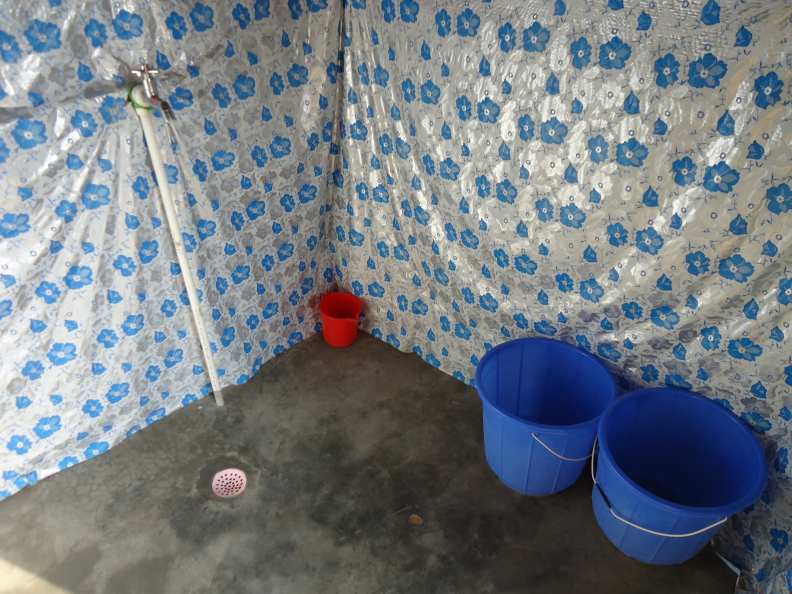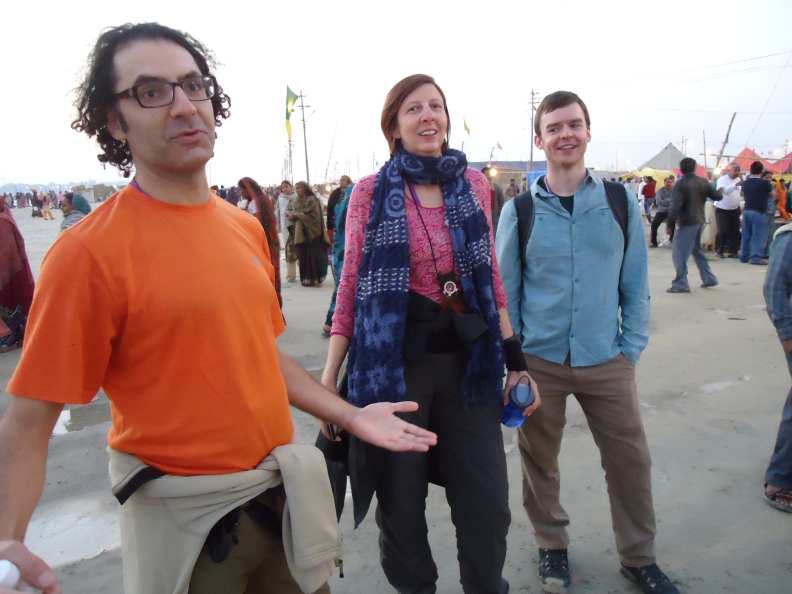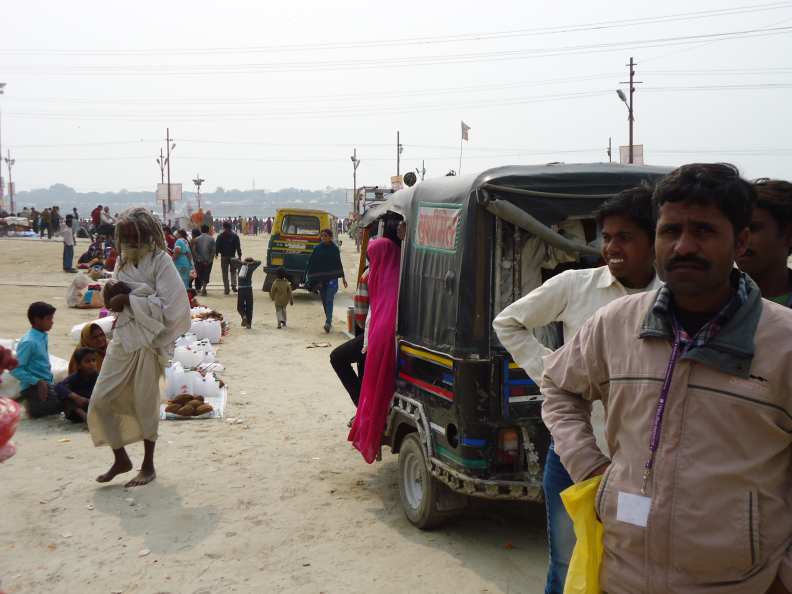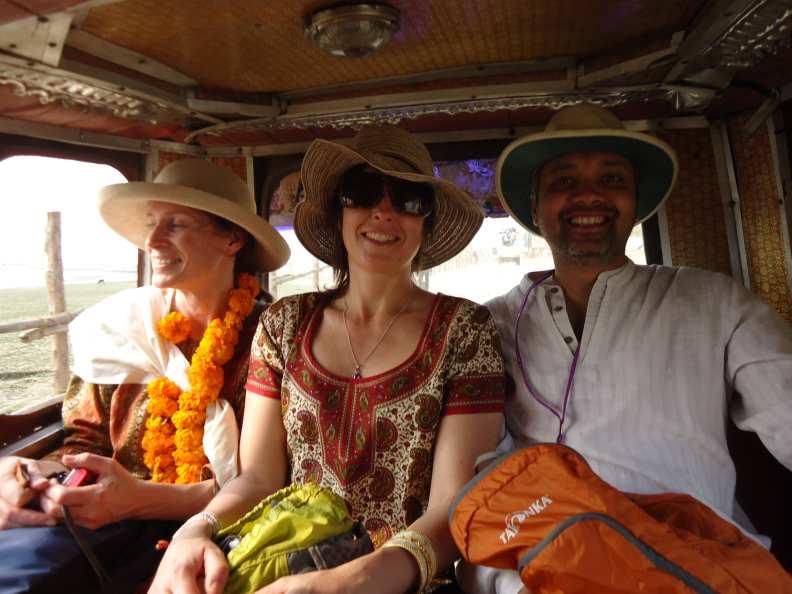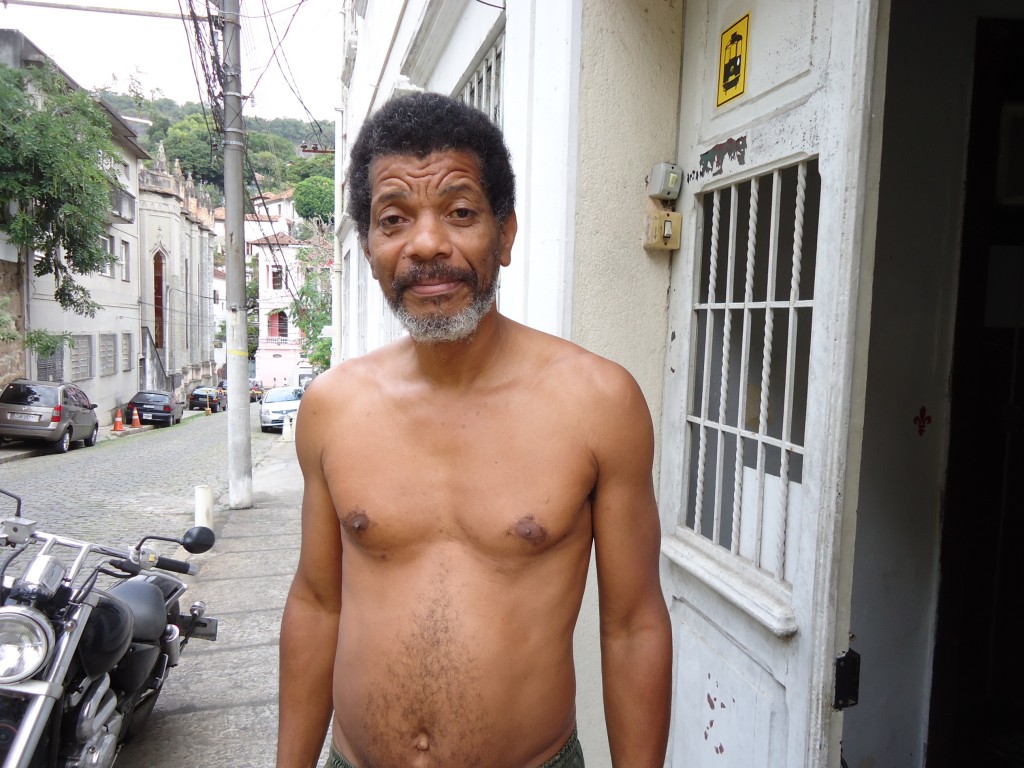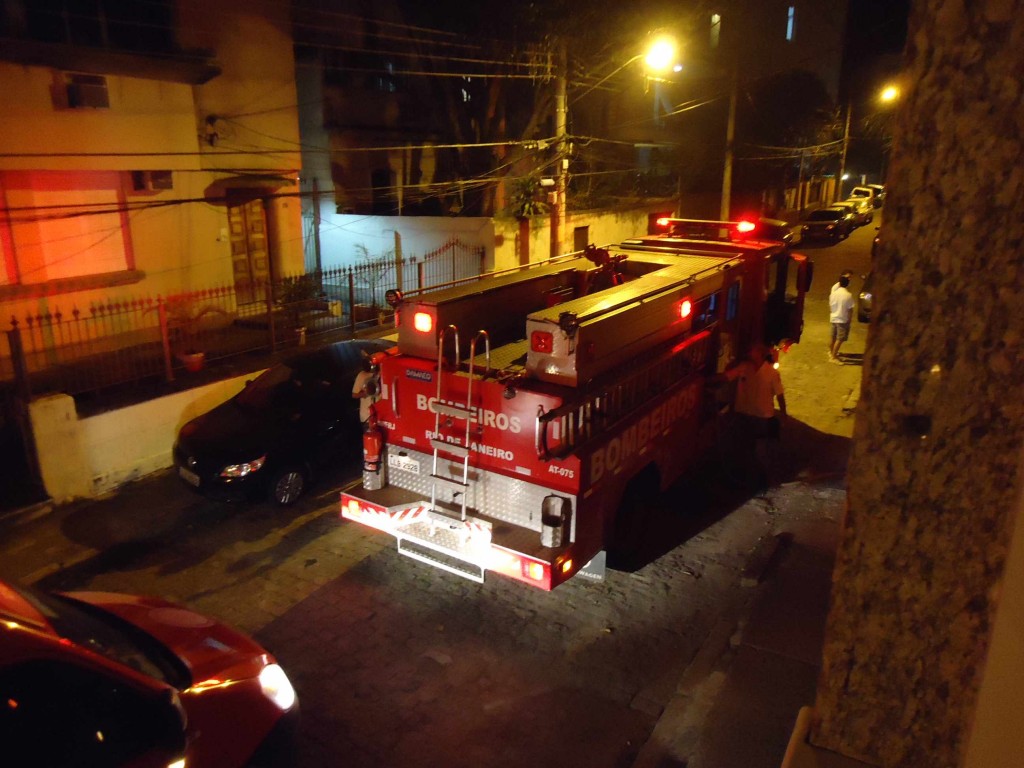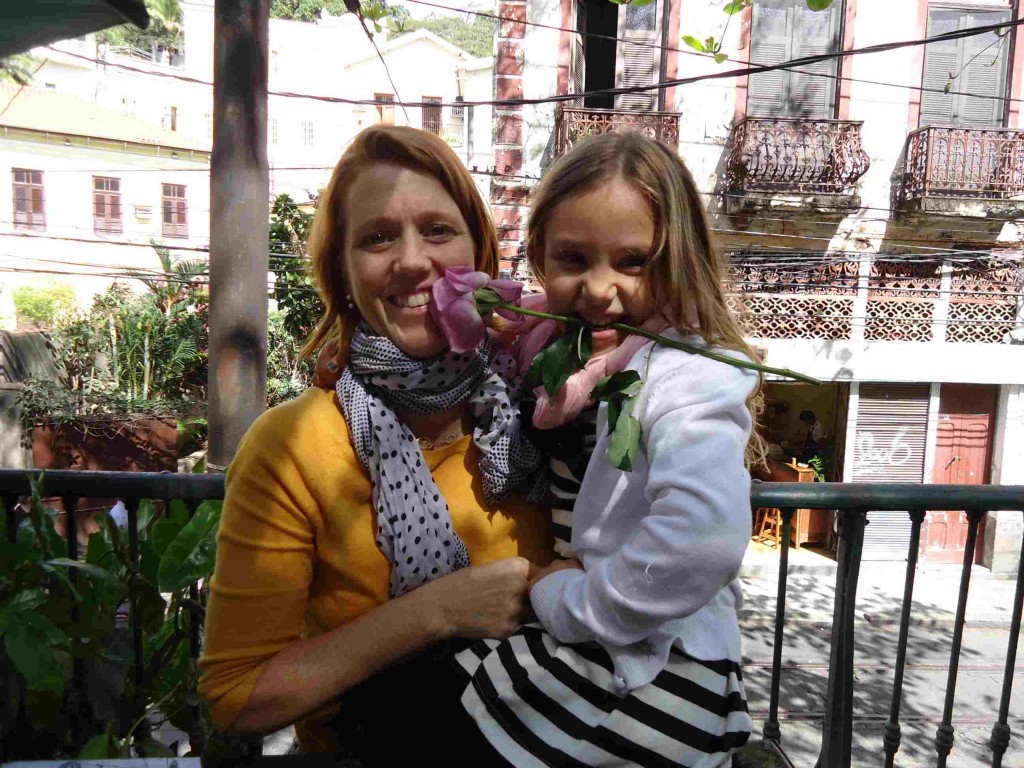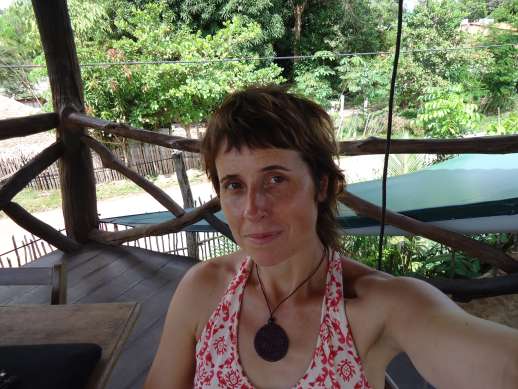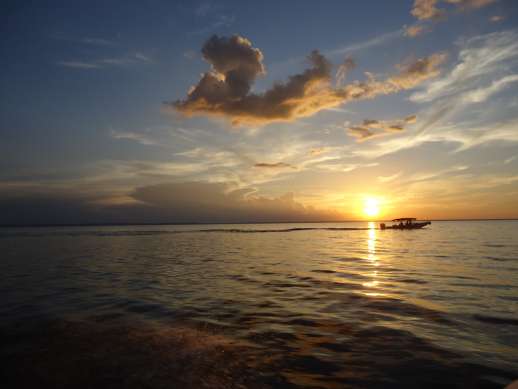AS PUBLISHED IN YOGA NATION
I’ve been in the Amazon two weeks now—it’s a wild place. Rough, tough, with an edge of violence. Even its insects are aggressive. I’ve been suffering from all kinds of insect attacks—and mosquitoes are only the beginning.
My first day on Ilha de Marajó, where the police ride water buffalo (no kidding), I went without bug repellent—July is the low season for mosquitoes, and they weren’t bothering me particularly. I ate dinner at a beach shack blasting telenovelas (soap operas) the only restaurant open near my isolated pousada. I even stayed outside reading into the evening without any kind of protection. I had some lofty idea about building up antibodies by allowing a few critters to gnaw at me for a while.
Needless to say, within a few hours my pale, North American limbs were dotted with red spots every centimeter. They would have made a perfect poster for DEET: “Don’t mess with the Amazon, kids, or this could happen to you!”
I was soon taking tumeric (to counter inflammation) and applying tea-tree oil to the bites (a strategy recommended by Carmen, an Italian woman I met in Belém) making me smell like a cross between a curry and a dentist’s office.
Then I arrived in Santarém, a small river city on the Amazon about equidistant from Belém and Manaus. I stayed in the cheapest recommended hotel near the busy waterfront, Hotel Brasil. My room had a cheap lock on the door, and its polyester sheets looked like they had not seen the laundry in months. The mattress had about the same comfort as an old chewy pancake.
The room had a window and a fan, but somehow still no air. The next day, after hardly sleeping for the heat and the mosquitoes, the back of my left arm had an odd bumpy texture. I felt along it with my right hand. What was this?? Then I looked—completely chewed up. Gross. I suspected the mattress. For sure, it was a breeding ground. Fleas? Or some Amazonian species of noxious bug?
So there I was with my lumpy arms and my red Dalmatian legs strolling along the river-front of Santarém. Ah, life in the Amazon was good. I ate my packet of fried bananas (they were stale), bought from a grumpy lady in a headscarf, and drank a fresh coconut juice from a woman who could hardly interrupt her gossiping to attend to me. Wasn’t traveling great! This was the life!
Just then a Peruvian clown, also staying at Hotel Brasil, recognized me. He came over. He was so poor that he hesitated to pay the R$2 ($1 US) for a fresh coconut juice.
We walked out onto a floating dock where locals were fishing under the full moon, throwing the silver fish into the middle of the dock.
“How old do you think I am?” he asked. Juan Carlos had traveled from Lima to the Brazilian Amazon, selling bracelets and earrings to make money along the way. He hung them on a black cloth stretched over a wooden frame. He also juggled plastic pins at traffic intersections while drivers waited for the light to turn. Both earned him a few reals, pennies really. Brasil, a nation on the rise, has become expensive.
“Uh… 40.” I said, sort of annoyed at his question.
“Nossa!” he exclaimed, “Not that old! I’m 38!” But pretty close, I thought. Life on the road hadn’t been super kind to Juan Carlos.
“No family, no place to call home?” I asked. With his dreads and slightly swollen face, he looked a bit worse for wear. He seemed to be sharing a room at Hotel Brasil with a hippie chick with a grim expression and dreadlocks held back under a bandana. She also sold jewelry. She never looked happy—or trustworthy. Perhaps she needed better drugs. Juan Carlos said she stole from him in Parantins, at the Boi Bumba festival. The room they split cost $15 US. Not a whole lot to squabble over.
The next day, I joined the NGO Saude é Alegria (health and happiness) for a 4-day boat-tour of remote communities on the Rio Ararpiuns. We crossed the Amazon and the Tapajós rivers to reach the arching Ararpiuns. I was now living completely in Portuguese. People kept saying how good my Portuguese was, but I could not communicate complex ideas and I couldn’t jump into conversations. It was very challenging. I was living in the realm of “the gist of things” with the vocabulary of a 7-year-old.
But even more challenging was trying to understand the mameluco —the river dwellers who are descendants of native people and escaped African slaves (caboclos are descendants of native people and Europeans, specific to the Amazon). Even the people from São Paulo (Paulistas) had trouble understanding them.
But everyone understood my bug bites. The bites drew comments. The weirdest of the bites happened near the village of Arimum. We were on a forest walk to look at medicinal trees. The next day I watched an enormous, bulbous blister grow on my left knee. It was like a bug had pitched camp and inflated its own command center there.
The blister was so weird and ugly that it even weirded-out the mameluco who’ve lived in the Amazon—with its birds, animals, fish and insects–for thousands of years. There was no medicinal tree, apparently, for me.
After much discussion, the local medicine woman and the head guy agreed that I had been bitten by a forest insect that lived in wet areas (everywhere, basically) called “taxí” (ta-shee). The bug’s tactic was to leave a trail of urine (“xixí”–shee-shee) so acidic that it literally burned the skin. What wasn’t blistering was angry and red, as though slashed with a hot iron.
It was gross, but it was fascinating. The locals and my NGO companions kept asking to look at it, staring with bulging eyes and mouths agape. Then they would invariably shake their heads, “Nossa Senhora!”
After two days of commentary, Nelso, the nice kind of head guy of the village of Atodí, who wore a knock-off Nike shirt, jean shorts, and bare feet, recommended gently puncturing it. He took a spiny needle from a nearby Amazonian tree. They were practically spitting out sharp needles.
“Is it clean?” I asked dubiously. Although this might not have been the right question. Maybe I should have asked, is it poison-free?
“Sure, sure it’s clean,” he said. “It’s from the forest.” In my book, this doesn’t count as clean. He wiped it on the ground. “Don’t worry.”
I sat on a concrete slab outside the newly constructed eco-tourism bathroom, and he knelt beside me with the forest needle and a ribbon of toilet paper. He punctured the bulb and gently squeezed the liquid out onto the absorbent paper. It didn’t hurt but the blister also didn’t want to drain. Command center was not about to evacuate.
After several minutes, a small crowd was gathering. “It will fill up again,” Nelso said, touching the tender red areas carefully. “But puncture it again and it will drain completely the second time.” He shook my hand to say goodbye without looking me in the eye. I wasn’t sure if this was local custom– habitual shyness–or if he was completely disgusted.
I returned to Santarém and the bug infested hotel—this time armed with a hammock that I strung up between the walls. Before bed I slathered on anti-bacterial cream and hosed myself down with bug spray. Then I slept with the windows open and a thin sarong completely pulled up, even over my head, in spite of the heat. The last frontier might just possibly be my face. No way was I going to wake up looking like Elephant Man.
After surviving the mosquitoes, fleas or miscellaneous jungle-bugs, Peruvian clowns, and taxí, I decided to head to Alter do Chão, a little beach town, for a few days of R & R.
There I met up with Ana who I’d met on the NGO adventure. She’d encountered Marcos, a lonely Paulista, at our pousada. Together we hired Raimundo and his boat to go an hour across the Rio Tapajós to visit Dona Rosalinda.
Dona Rosalinda is a different kind of river dweller—she lives in the river not alongside it. Her house is on stilts. Part of the year is it almost underwater (though in recent years, it has been partially submerged as the water levels have risen. She copes by lifting everything–sofas, beds, tables– up onto temporary wooden beams).
Raimundo’s boat pulled up to Dona Rosalinda’s door, and—braless and almost toothless after a whole life spent there raising 10 children—she came out to help us tie the boat. Her 9-year-old granddaughter, Eloise, dressed in a pink dress and pigtails, bounced along behind her.
We weren’t there for 10 minutes before Dona Rosalinda noticed my damaged left leg. “O que isso?” What’s this? She said looking a bit horrified. Ana, taking pity on my Portuguese, explained: It was the work of a forest bug that left a trail of piss that burned her leg….
Dona Rosalinda went to get a needle and rubbing alcohol. In a scene that was starting to feel familiar, we gathered around my grotesque knee and the commentary began.
“Never seen anything like it!” exclaimed Dona Rosalinda.
“Didn’t know it was possible!” said Raimundo.
“What a sight!” said Marcos.
Dona Rosalinda handed me the needle. I punctured the bulb. It had, as Nelso said, risen up again, though not as far. As before, it didn’t want to drain. Big tears of liquid formed and slowly dropped down my leg.
Dona Rosalinda asked to take a turn with the needle. She leaned in close, and with a shaky hand, stabbed away. I got the feeling she enjoyed it.
We stood around for a long time, watching the blister’s water plop down my leg. Then we got in the canoe and Eloise piloted us through the half-submerged forest (sometimes called the Enchanted Forest) crashing into spiny trees and thwacking us with low-hanging branches.
“Cuidad, Eloise! Tem pessoas atras!” said Raimundo was was paddling at the back. “Careful of the people behind you!”
The canoe, with 5 people on board, sat low in the water. Ana was afraid that a jacaré (cayman) would swim up into our laps. Marcos was afraid of swimming snakes, cobras in the water. We saw a sloth descending a tree, quite quickly for a sloth, and several birds, large and small, bright blue, black, and bright yellow. Eloise talked nonstop. It began to rain.
Dona Rosalinda invited us to stay for lunch since it was now pouring. She threw 5 small fish on her makeshift barbecue—metal skewers over bricks—including a piranha that she fed to the dog, Poeta. Eloise made instant rice in a small dark kitchen. Dessert was guava paste in condensed milk on toothpicks. After, we sat in the living room that was plastered with glossy posters of Virgin Mary festivals. Arrangements of plastic flowers sat on piles of disorderly clothes and trinkets. We drank extremely sweet coffee.
When the rain cleared, we said goodbye and Raimundo took us back over the Tapajõs. The river was very windy and choppy. For an hour we sped along slapping the water with spine-jamming bumps. We were sprayed every few minutes by the struggling river—completely soaked. My blister was draining the whole time, mingling its infected waters with the river’s.
But it was a great day—surprising, interesting, fun, unusual. We’d seen dolphins, an eagle, two kinds of monkeys in the trees along the river. I was surprised that people could live that way, literally in the river, for generations. The colors were intense and beautiful. Eloise was confident and charming. There were hugs all around as we left. Dona Rosalinda cried.
But I was even more surprised when I got back to the pousada (inn) in Alter do Chão that evening to see that the reluctant blister was almost completely dry. Then I realized why: my knees were burned. I’d been sitting in the wind and the sun on the open boat, not feeling the heat because we were wet the whole time.
Perfect, I thought. A perfect end to an ugly mess. Now both knees were equally red, pulsing with discomfort. Que mais? What next?






